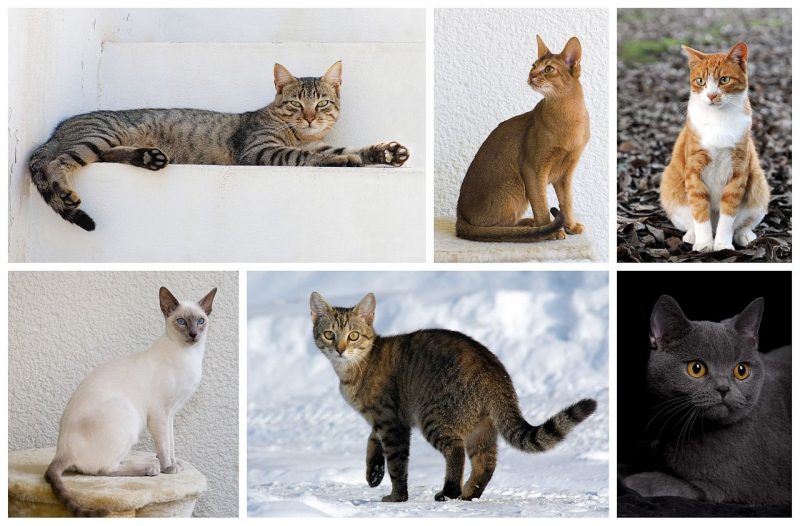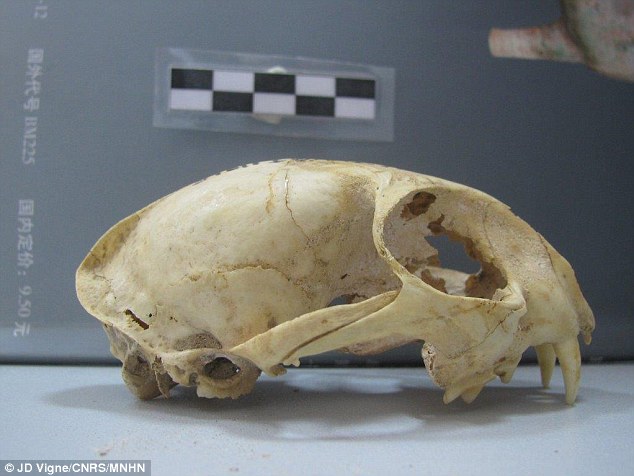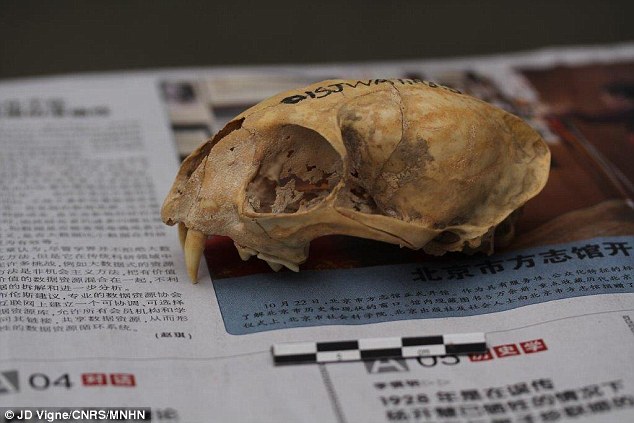There are thought to be about 500 million domestic cats worldwide. For the longest time, researchers and biologists believed that cats descended from a form of wildcat that was native to North Africa and the eastern Mediterranean.
However, there has been new research that suggests that the earliest domesticated cats in China lived with humans almost 5,000 years ago. By studying the bones of one of the Chinese cats, researchers gather that it must have been a relative to the Asian leopard cat.
Researchers and biologists always thought that domesticated cats were transported from Asia to Egypt and the Mediterranean during those years. However, the new studies suggest that the “taming” of cats had taken place in two different parts of the world with two different cat species.
The cat bones researchers used for the study were found in archaeological excavations in 2001 from a site of ancient agricultural settlements in Shaanxi, Northern China. After they were tested, they were found to have lived about 3,000 to 3,500 years BC.
In order to determine from which species the cats originated, scientists did a geometric morphometric analysis.

Just as in the Near East and Egypt, the leopard cats were most likely coaxed into Chinese settlements by the rodents, that ate the people’s grains they had stored.
During the Neolithic age at one point it seems that the western cat had replaced the leopard cat. This goes hand-in-hand with the time when the Silk Road route opened up, making it easier to trade and import the cats. Shaanxi’s ancient capital, Xi’an was the starting point for the Silk Road. The establishment of the Silk Road was actually the start of the Roman and Han empires.
The researchers that are doing the study are experts from The French National Centre for Scientific Research (CNRS), the French Natural History Museum (MNHN), the University of Aberdeen, the Chinese Academy of Social Science, and the Shaanxi Provincial Institute of Archaeology.
Since there are no ancient DNA samples from the remains found, the only way to differentiate the small cat bones is through the geometric morphometric analysis. The tests show similar shapes with differences that are imperceptible by using conventional techniques.
The scientists at the institutions had analyzed mandibles of five cats from Shaanxi and Henan dating from 3,500 to 2,900 BC.

All the bones that were studied belonged to the leopard cat, which is a cat similar to the size of a modern domestic, but with longer legs and smaller head. There are still wild species living across the majority of Asia.
The wildcat, which happens to be a distant relative of the western wildcat, is known for its propensity to frequent areas with a lot of humans. The researchers were able to determine that the cats and humans began living together once agriculture developed. That is most likely because cats served a great use by catching all of the rodents eating the crops.
This discovery mirrors the pattern that was recorded in the west. The domestication started around 9,000 to 11,000 years ago. Up until this recent discovery, archaeologists had believed that cats were domesticated in ancient Egypt around 2310 BC and 1950 BC. However, remains of kittens that were found in 2014 dated back to almost 2,000 years.

This caused researchers to question whether or not the domesticated cats spread outwards from Egypt or if the animals in China had developed the same kinds of interests in the human settlements. However, the recent findings show that the domestication took place independently, which means the animals would not have been brought in from Europe.
Did you know that cats in China are still used frequently as hunters, catching mice that are eating farmers’ crops? If you go to a Chinese restaurant or to China itself, you will notice a cat figurine with a waving hand. It is called “Lucky Cat” and is considered a token of hope for bringing in new customers. The Chinese revolutionary leader, Mao Zedong, would be known as Chairman Cat, if it was translated to English. If you look closely, the first name, Mao, kind of sounds like miaow, or meow.